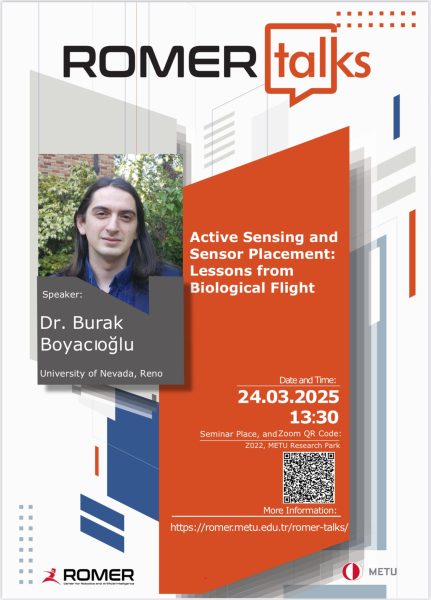Title: Active Sensing and Sensor Placement: Lessons from Biological Flight
Abstract:
Flying insects have an unexpectedly remarkable sensing capacity. For instance, the hawkmoth has gyroscopic sensing capabilities, thanks to neural-encoded strain information through mechanosensors called campaniform sensilla located on their wings. Similarly, the fruit fly can track chemical plumes by estimating the ambient wind direction without directly measuring it. In this talk, I will introduce the observability tools we developed to better understand the active sensing decisions made by insects and the importance of sensor locations. Specifically, I will address how to determine observability levels (i.e., estimator performance limits) for systems with composite output functions, how to integrate noise information into observability analysis, and how to determine the observability level of a particular state variable. Finally, I will present engineering applications as a future direction.
Bio:
Dr. Burak Boyacıoğlu earned his Ph.D. from the University of Washington’s (UW) William E. Boeing Department of Aeronautics and Astronautics in 2022. He holds a B.S. in Aeronautical Engineering, a minor in Mechatronics, and a Master’s in System Dynamics and Control, all from Istanbul Technical University (İTÜ), which he completed in 2013, 2014, and 2016, respectively. His research interests include optimal sensor placement and active sensing strategies for highly sensed systems, with applications in biological flight and engineered flight and space systems. Most recently, he was a postdoctoral scholar at the University of Nevada, Reno, and taught a grad-level course for professional students at UW. He is currently a visiting scholar at İTÜ.
Nothing from May 31, 2025 to June 30, 2025.

